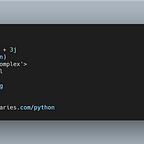Angular development demands security and control over navigation activity. This article goes into two critical Angular Guards enhancements: the switch from implementing the CanActivate interface to using CanActivateFn. These enhancements provide developers with a simpler, more effective method to protect routes while imposing role-based access control.
Guards act as guardians in Angular apps, limiting accessibility to specific routes based on defined constraints. They play an important role in implementing authentication, authorization, and other navigation rules. Their utility is in protecting routes from unwanted access or improper navigation.
Route guards are used in Angular for authorizing or denying access to specific routes. The CanActivateFn function provides a functional alternative to building route guards that allow or deny access to specified routes based on certain conditions. In this post, we will look at how to work with CanActivateFn in Angular and provide practical examples of how to use it to protect routes or parts of our Angular application.
Read the full article.
